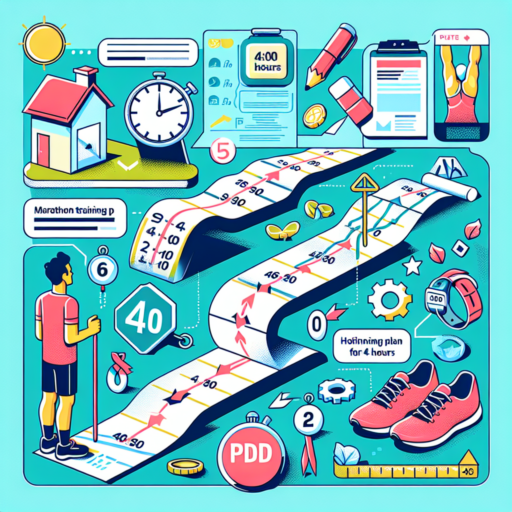What Are Workout Plans and Why They Matter
Workout plans are structured exercise routines designed to help individuals achieve specific fitness goals. These regimens are tailored to cater to an individual’s objectives, whether it’s weight loss, muscle building, improving endurance, or simply staying active. A well-crafted workout plan considers several factors, including the person’s current fitness level, available equipment, and personal preferences. The significance of having a structured approach to exercise cannot be overstated, as it brings a host of benefits that transcend physical appearance.
One of the primary reasons workout plans are essential is that they provide a roadmap to achieving your fitness goals. Without a clear plan, efforts can be misplaced, leading to minimal progress and dwindling motivation. A structured plan ensures each workout contributes towards reaching a larger objective, whether that’s improving your 5k run time or building strength. Additionally, workout plans help in evenly distributing exercise to different body parts, thus minimizing the risk of injuries caused by overuse or neglect.
Components of an Effective Workout Plan
- Warm-up: Prepares the body for exercise by gradually increasing the heart rate.
- Variety of exercises: Targets different muscle groups and prevents boredom.
- Rest days: Allows muscles to recover and grow.
- Progressive overload: Gradually increases the intensity of the workouts to challenge the body.
Understanding the elements that contribute to a successful workout plan can illuminate why these plans are indispensable in any fitness journey. They are not just about guiding you through various exercises but about ensuring sustainability, preventing injuries, and keeping you motivated over time. In essence, the value of a well-thought-out workout plan lies in its ability to transform fitness from a sporadic activity into a consistent part of your lifestyle.
Setting Goals: How to Choose the Right Workout Plan for You
Finding the optimal workout plan starts with understanding your fitness objectives. Whether you aim to build muscle, lose weight, or simply enhance your overall health, your goals play a pivotal role in the selection process. It’s crucial to set realistic and measurable targets to maintain motivation and track progress effectively.
Considering your lifestyle is another essential step in choosing an appropriate workout plan. If you have a demanding job or family commitments, a plan demanding hours daily at the gym might not be feasible. Opt for routines that seamlessly integrate into your existing schedule, whether it’s short, high-intensity sessions or longer, moderate exercises that can be done at home.
Understanding your body type and current fitness level can also guide you toward the most suitable workout plan. An approach tailored to your physical capabilities and any existing health conditions ensures a safer and more effective path to achieving your fitness goals. Listening to your body and adjusting your workout plan as needed is key to avoiding injury and sustaining progress.
No se han encontrado productos.
The Top 5 Workout Plans for Beginners: Getting Started
Embarking on a fitness journey can be both exciting and overwhelming for beginners. Knowing where to start is crucial for building a solid foundation without risking burnout or injury. This introduces the importance of choosing the right workout plan tailored to those who are new to regular exercise routines. The top 5 workout plans for beginners aim to blend simplicity with effectiveness, gradually guiding you towards improved health and increased fitness levels.
Essential Features of Beginner Workout Plans
Before diving into the specific workout plans, it’s important to understand what makes a workout ideal for beginners. A balanced approach that incorporates strength training, cardio exercises, and flexibility workouts is key. Each plan should start at a low intensity, with gradual increments to avoid overwhelming the new exerciser. Additionally, incorporating rest days is vital for recovery and progress. These components ensure a comprehensive routine that encourages persistence and minimizes the risk of injury.
Creating a Sustainable Fitness Habit
For beginners, sustainability should be a top priority. The goal is to develop a habit that will stick, rather than a fleeting interest that wanes after a few weeks. To achieve this, selecting a workout plan that sparks joy and suits your personal preferences is crucial. Whether it’s the satisfaction of lifting weights, the peace found in yoga, or the exhilaration of cardio, finding what motivates you is the cornerstone of a lasting fitness routine. An ideal beginner workout plan is not just about the exercises; it’s about building a healthier lifestyle.
Advanced Fitness: Transform Your Body with These Proven Workout Plans
Embarking on an advanced fitness journey requires more than just determination; it necessitates a solid plan that pushes the envelope yet respects the body’s limits. The concept of Advanced Fitness isn’t merely about lifting heavier weights or running further; it’s about intelligently sculpting the body and enhancing performance through well-crafted workout plans. These immense plans are designed with progression, variation, and recovery in mind, ensuring that each session contributes towards transformation.
One of the key components of these proven workout plans is their structured approach to pushing your physical boundaries. They include a mix of high-intensity interval training (HIIT), progressive overload, and strategic rest periods to optimize fat loss and muscle gain. By focusing on compound movements and functional fitness, each workout ensures you’re not only building strength but also improving mobility and endurance. This multifaceted approach guarantees that you’re getting a comprehensive workout, maximizing your time and efforts in the gym.
Moreover, Advanced Fitness plans are adaptable. Whether you’re a seasoned athlete looking to refine your physique or an experienced exerciser aiming to break through a plateau, these workouts can be tailored to meet your specific needs. Inclusion of dynamic stretches, meticulous form correction, and incrementally challenging exercises ensure each session is effective and safe. By incorporating these elements, these rigorous yet rewarding plans offer a roadmap to achieving and even surpassing your fitness goals.
Home vs. Gym: Selecting the Best Workout Plan for Your Lifestyle
Deciding between home workouts and gym sessions is a pivotal choice that can profoundly influence your fitness journey. Each option offers distinct benefits tailored to various lifestyles, and understanding these can help you make an informed decision. This comparison aims to delve into the factors you should consider when choosing your ideal workout environment.
Benefits of Home Workouts
Working out at home provides the utmost convenience and flexibility. With no commute time to a gym, you can easily fit exercise into a busy schedule. Home workouts are highly customizable; you can choose when to workout and select exercises that suit your personal goals and preferences. Furthermore, it’s a budget-friendly option, eliminating the need for costly gym memberships or travel expenses. For individuals seeking privacy and a personalised space to exercise, home workouts are an ideal choice.
Advantages of Gym Workouts
In contrast, gyms offer access to a wide range of high-quality equipment and facilities that might not be available at home. This variety can enhance your workout effectiveness and provide options for targeting different muscle groups more precisely. Additionally, gyms often have professional trainers available to offer guidance, support, and personalized fitness plans. The social atmosphere of a gym can also be motivating for many, providing a sense of community and encouraging a regular workout routine.
Nutrition and Recovery: The Unsung Heroes of Effective Workout Plans
When discussing effective workout plans, the conversation often revolves around the most intense exercises or the latest training methodologies. However, the critical components of nutrition and recovery frequently go unnoticed. These elements are paramount in ensuring that your body can perform at its peak, adapt to stress, and improve over time. Nutrition, in this context, isn’t just about eating the right kinds or amounts of food, but ensuring those foods fuel your workouts and aid in the repair processes afterward.
Recovery, on the other hand, is a multifaceted process that includes rest, sleep, stress management, and active recovery methods. It’s during this period of recuperation that the body heals and strengthens itself. Ignoring recovery can lead to overtraining, injuries, and a plateau in performance. The role of nutrition is inseparable from recovery, as the body requires a plethora of nutrients to repair muscle fibers, replenish energy stores, and reduce inflammation caused by intense physical activity.
To optimize the effectiveness of recovery, integrating a well-thought-out nutrition plan tailored to your workout intensity and personal goals is imperative. Consuming protein-rich foods is crucial for muscle repair, while carbohydrates are essential for replenishing glycogen stores. Moreover, incorporating anti-inflammatory foods into your diet can significantly enhance recovery by reducing swelling and promoting healing. Understanding these nuances can transform your workout plan from good to exceptional, propelling you towards your fitness objectives with greater speed and efficiency.
Cardio or Strength Training: Understanding the Core of Your Workout Plan
Deciding between cardio and strength training is a critical step in defining the essence of your workout plan. Both forms of exercise play unique roles in physical fitness, contributing to overall health, weight management, and muscle development. Understanding the core benefits and distinctions of each can guide you in tailoring a workout routine that aligns with your personal fitness goals.
Cardiovascular exercises, commonly known as cardio, boost the heart rate and breathing, promoting heart health and endurance. Running, cycling, and swimming are classic examples that not only improve cardiovascular efficiency but also aid in calorie burn which is essential for weight loss. On the other hand, strength training, involving weights or resistance, focuses on building muscle mass and strength. This form of exercise enhances metabolic rate, which means your body continues to burn calories even at rest.
Choosing between cardio and strength training often hinges on your specific fitness objectives. If your goal is to enhance endurance or shed pounds, cardio might take precedence in your workout regimen. Conversely, if you aim to gain muscle and increase strength, incorporating more strength training into your plan is advisable. Yet, the most effective fitness strategies often integrate both cardio and strength training to achieve a balanced and comprehensive approach to health and wellness.
Tracking Your Progress: Tools and Tips to Stay Motivated
Keeping track of your journey towards personal or professional milestones can significantly impact your motivation levels. With the right tools and strategies, the act of monitoring your progress transforms from a daunting task into an inspiring checkpoint. Popular options like digital apps and classic pen and paper methods offer different advantages depending on your preferences.
Choosing the Right Tools for You
When it comes to choosing the right tracking tools, it’s essential to select one that resonates with your lifestyle. Digital aficionados might lean towards app-based trackers that offer real-time data and interactive features. On the other hand, the tactile feel of marking down progress in a journal or planner can be incredibly satisfying for those who appreciate a more hands-on approach.
Setting Realistic and Achievable Goals
One of the keys to staying motivated is setting goals that are both challenging and attainable. Break your larger objectives into smaller, manageable tasks to avoid feeling overwhelmed. Celebrate each milestone, no matter how small, with a reward system or affirmative acknowledgement. This practice not only boosts your morale but also keeps the momentum going..
Incorporating tracking into your routine necessitates consistency. Designate a specific time each day or week to evaluate your progress. This act not only keeps you accountable but also provides an opportunity to reflect and adjust your strategies as needed. Embrace the journey, and remember, tracking your progress is about personal growth above all.
Adapting Your Workout Plan: How to Safely Incorporate New Challenges
Integrating new challenges into your workout routine is essential for continuous improvement and keeping your fitness journey exciting. However, knowing how to do this safely is crucial to avoid injury and ensure sustainable progress. Here are several strategies to consider when looking to step up your workout plan.
Understand Your Body’s Limits
First and foremost, understanding your body’s current limits is the key to incorporating new challenges safely. It’s important to acknowledge the signs of overexertion, such as excessive fatigue, pain, or discomfort, and adjust accordingly. A gradual increase in intensity or difficulty ensures your body has enough time to adapt without excessive strain. Listening to your body and recognizing the difference between pushing your limits and damaging them is crucial for long-term fitness health.
Set Realistic Goals
Setting realistic, measurable goals is fundamental when adding new challenges to your workout routine. Whether it’s increasing the weights you lift by a small percentage, aiming to run a slightly longer distance, or incorporating new forms of exercise into your regimen, specific goals help to guide your progress in a manageable way. This approach ensures that you’re not overwhelming your body or setting yourself up for disappointment. Setting benchmarks that reflect your capabilities while still pushing you forward is a balanced way to enhance your fitness journey.
Lastly, always allowing sufficient time for rest and recovery is of utmost importance when adapting your workout plan. Our bodies need time to repair and strengthen, making rest days essential to any fitness routine aiming to incorporate new challenges. Balance high intensity workouts with periods of lower intensity exercises to give your muscles the recovery time they need, preventing injury and promoting long-term health and performance.
Success Stories: Real-Life Transformations Through Structured Workout Plans
Every day, people around the world are turning their lives around with the help of structured workout plans. These success stories aren’t just about weight loss; they’re about gaining confidence, improving health, and transforming lives. Whether it’s shedding pounds, building muscle, or boosting mental health, the impact of following a dedicated exercise regimen can be profound. Let’s delve into some of these real-life transformations and understand the pivotal role structured workout plans play in achieving such remarkable outcomes.
From Sedentary to Super Fit: Finding Motivation Through Routine
Finding the motivation to start exercising is tough, but for those who have made the leap, the rewards are undeniable. One of the common threads among success stories is the establishment of a routine. When individuals commit to a structured plan, they’re not just exercising; they’re building a lifestyle. This transformative journey often begins with small, manageable goals, evolving into a consistent, rewarding exercise habit. These stories inspire and highlight the importance of consistency and a well-defined roadmap to fitness success.
Overcoming Challenges: The Role of Personalized Workout Plans
One size does not fit all in the realm of fitness. Through personalized workout plans, individuals struggling with unique challenges — be it time constraints, physical limitations, or lack of motivation — have found their path to success. By tailoring exercise routines to fit personal needs and goals, these plans allow for flexibility, adaptation, and, most importantly, sustainability. Success stories borne from customized workout strategies underscore the value of a plan that catiles to the individual, making transformation not just a possibility, but a reality.
Every transformation story serves as a beacon of inspiration, showcasing the power of commitment, the significance of tailored exercise plans, and the life-changing potential of regular physical activity. These narratives remind us that with the right structure, support, and dedication, achieving fitness goals and undergoing a comprehensive life transformation is within reach for anyone willing to take the first step.




